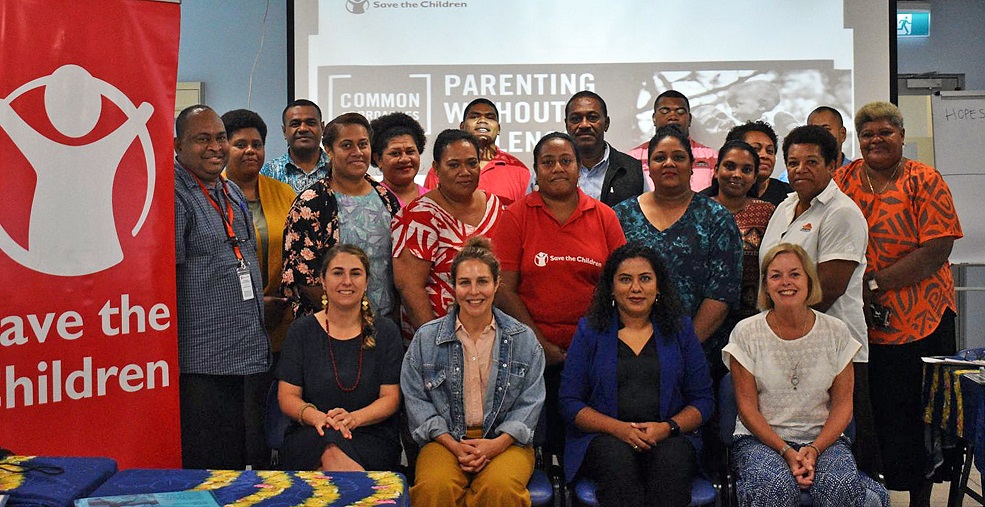Parenting without Violence presents a promising level of evidence that parenting interventions can reduce the physical and humiliating punishment of children in homes.
The approach advocated by Save the Children is designed to prevent children from experiencing physical and humiliating punishment in the homes.
To achieve this, they work with parents and caregivers to better understand child development, promote structure, warmth, dialogue and long-term goals and care for their children without violence.
Violence against children as we all know happens at home, starts early and continues through childhood, happens everywhere in developed and developing countries, in wealthier and poor households.
It is widely accepted as the norm, is linked to violence against women, and the most common form is physical and humiliating punishment.
Save the Children also works with governments to strengthen systems and mechanisms that increase children’s protection in equitable and gender sensitive ways. In addition, the common approach serves to transform harmful and discriminatory gender, power dynamics and improving relationships and communications within families. This is fundamental to end violence against children.
There are four components under the common approach. The first includes providing fathers, mothers and other caregivers with the knowledge, skills, and attitudes to parent positively without using violence.
Secondly, it is about empowering children and working to ensure they feel valued, respected and safe within their family and community.
Thirdly, it needs supporting communities so that they are willing and able to protect all children, girls, and boys from violence, and lastly, it seeks to strengthen equitable and gender sensitive child protection systems.
A week-long training course allowed for representatives from the Department of Social Welfare, iTaukei Affairs Board, Fiji Police Force and the National Council for Persons with Disabilities and Save the Children Fiji staff members to learn and be trained on the Save the Children’s parenting without violence common approach.
Save the Children Fiji CEO Shairana Ali said the silver course training program tied in with their five-year project titled “Save the Children, Collective Action to End Violence against Children”.
“The learning from the five-day training course would have strengthened our capacities as stakeholders in collectively working towards ending violence against children in Fiji,” she said.
“We were able to share our learning with our colleagues and support each other in our journey to achieving a safe Fiji for our children.”
Parenting without Violence can be implemented in humanitarian settings and protracted emergencies when there is sufficient stability and access to basic needs. A few activities would include an important focus on self-care of parents and understanding children’s reactions to distress.
Additionally, gender sensitive approaches and referrals to other multi-sectoral services are also important. According to Save the Children South Africa, violence against children cost the economy $US18.69 billion (nearly 6 per cent of the country’s GDP) ($F40.84b) in 2015 alone.
Such economic costs provide the critical evidence that it is necessary to invest in violence prevention and advocates for this with governments and other partners.
Save the Children Australia principal adviser child protection Karen Flanagan said they taught a lot of emotional language and literacy.
“We teach parents, guardians and stakeholders during sessions and training courses how to sit down and talk with children and express feelings.
“If parents learn to acknowledge their stress and understand what stress does to them, they will be able to express these feelings towards their children instead of choosing violence. They may express it like ‘I feel really disappointed when you do that’ rather than ‘you’re making me really angry I’m going to hit you’ by doing this, parents are allowing their children to understand and say, ‘oh I don’t want to make you feel like that mummy or daddy, I want you to be happy’.
“If parents start sharing emotional language their children can pick up on that and they read the cues, in this way parents are able to read their children and vice versa. We call it the warmth structure. So, there’s no need to be yelling, hitting, and screaming.”
She said the common approach was not for children to feel free in doing whatever they want.
“This is about giving clear boundaries but in loving, warm and respectful ways and when children respect their parents, they will want to please them, the evidence is overwhelming because it works, and it has good results for everybody so why wouldn’t we want to do it.”
The Save the Children Parenting without Violence common approach is advocating for change and by doing this they are pushing for governments to ban physical and humiliating punishment in all settings, including homes, to scale up parenting without violence as part of national parenting, child protection, health, early child development, early learning and social protection programs.
Lastly, Save the Children wants governments to increase resources for child protection systems including more trained social workers at local levels.
The five-day training was held on Monday, February 13 at the Moana Anglican Services and Teaching Centre along Des Voeux Rd in Suva.



